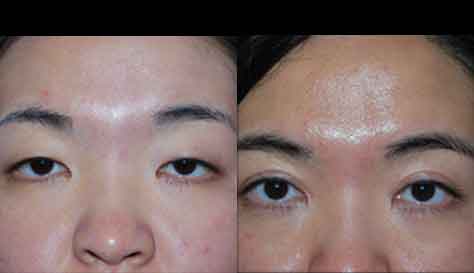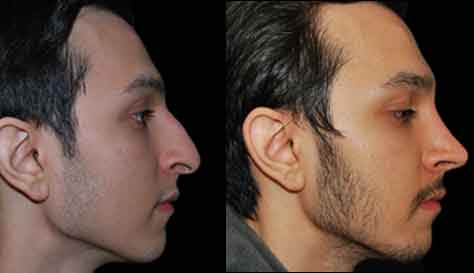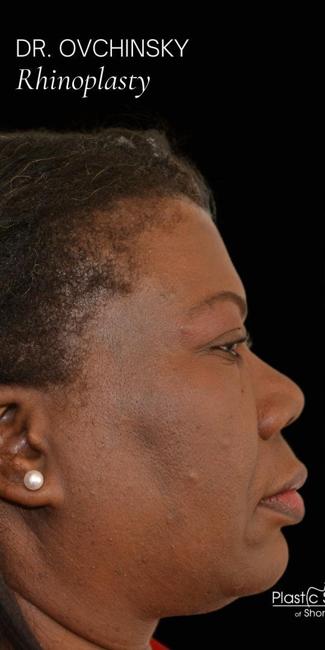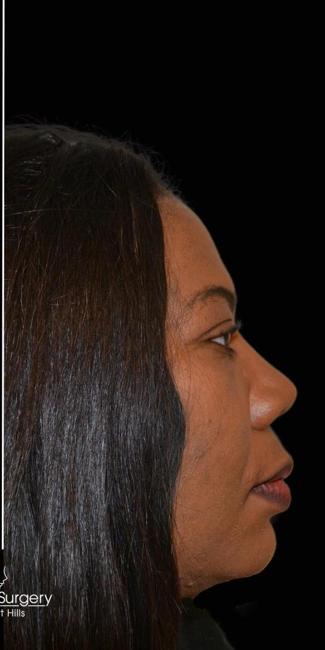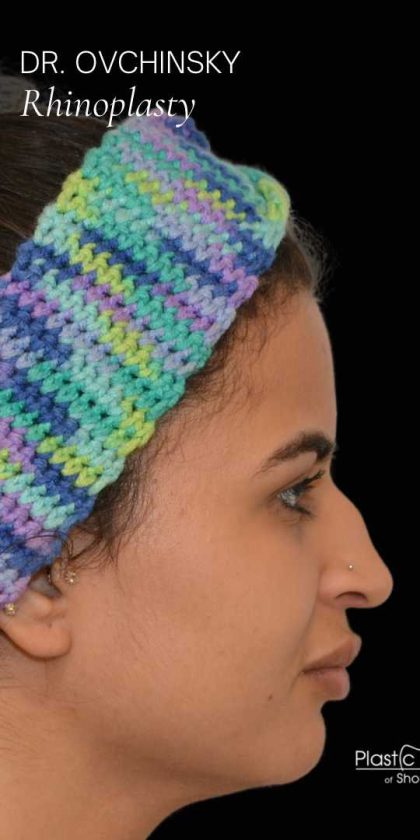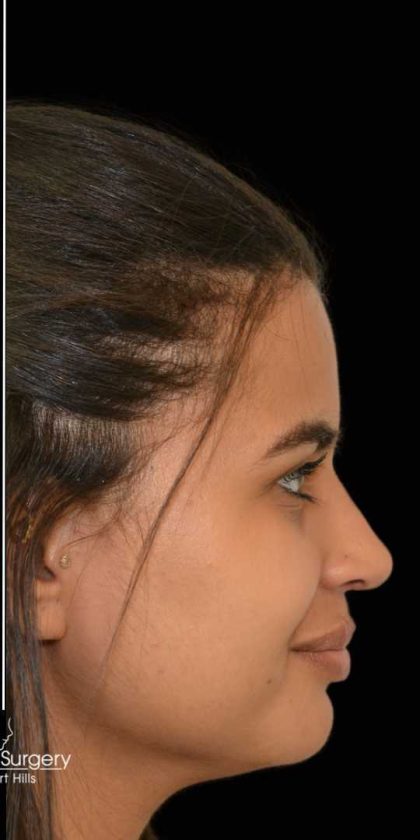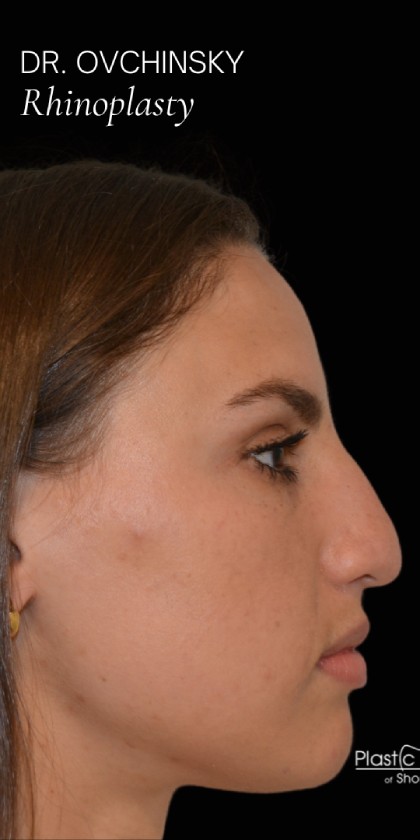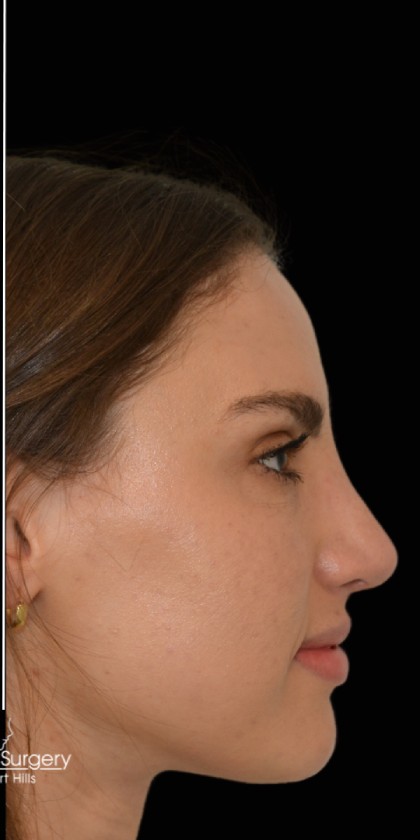Recent Developments in Rhinoplasty
Conveniently located to serve the areas of New Jersey and New York
Dr. Ovchinsky is a nationally recognized expert in Rhinoplasty. For more information about this procedure please view our Rhinoplasty page.

Double board certified plastic surgeon Dr. Ovchinsky, proudly serving Brooklyn New York and New Jersey, specializes in rhinoplasty surgery. His skill and technique along with his extensive knowledge of the history of this procedure is what makes him the very best at what he does.
Below, Dr. Ovchinsky shares some highlights about the evolution of the rhinoplasty procedure and how the surgery has advanced in the last decade.
Before and After Photos
The Evolution of Rhinoplasty or “Nose Job”
As with any body of science, the science of rhinoplasty has been constantly evolving. This evolution did not happen in a course of weeks or months, but if we look at the last decade we will see significant changes in rhinoplasty concepts from years prior.
In the past, so called “reduction rhinoplasty” had been almost a universal approach. For example, patients with bulbous tips had their tip cartilages reduced in size quite aggressively without paying much attention to cartilage strength, anatomy, overlying skin and many other important factors. This aggressive reduction quite frequently led to significant decrease in cartilaginous support of the nose. Consequently, many patients ended up with tip bossa, alar retractions, tip asymmetries and problems breathing due to external nasal valve weakness. You may ask why cartilage excision in cases of excessively wide cartilages would not always work? It may seem natural to cut the excess of the cartilage if we want to make the tip smaller, right? The answer is- not always right. Think what would have happened to a bow if you split the body thickness in half while keeping the same string tension? As you weaken the bow support, same amount of tension would likely make the remainder of the bow to bend even more with time. This is exactly what is happening with weak over-reduced nasal tip cartilages- instead of making the tip nice and small by cartilage resection, the cartilages would become weaker and more bowed, causing more tip bulbosity, various tip asymmetries and valve problems. In the same manner, aggressive dorsal reduction without restoring cartilaginous support led to inverted V deformities, overly narrowed noses and breathing problems due to internal nasal valve weakness.

It took quite a few years for rhinoplasty surgeons to fully appreciate the scope of the problem and to change their approach from resection to more of a suture modifications of the cartilages and various cartilage grafting to maintain the support of the nose. This was the time when numerous new nasal grafts have come to life. Whereas columellar strut graft was pretty much the only graft before, now we had a full plethora of new grafts developed: spreader grafts, alar batten grafts, lateral crural strut grafts, rim grafts, shield grafts, cap grafts, and septal extension grafts, to name a few. What was the outcome? The nasal support was preserved and quite frequently increased, however in many cases it did not make patients (and thus surgeons) much more satisfied. Patients started complaining of overly rigid immobile noses that would feel “foreign” to them. In addition, it would frequently take months and sometimes years for the postoperative swelling to subside. Also, excess cartilage due to numerous grafts would not infrequently cause too much “mass effect” on the airways leading to breathing problems.
In the first scenario of reduction rhinoplasty, short term results might have been good, but long term results would suffer because of inadequate nasal support. In the latter scenario, the long term outcomes might have been improved, but short term results would still make many patients dissatisfied with surgery. Is there way to make both short and long term results equally optimized with one technique? Is there a “holy grail” approach to rhinoplasty?
Rhinoplasty surgeons are in the constant quest for this rhinoplasty “holy grail” technique. Last 5 years have been notable for more judicious use of cartilage grafts, conservative reduction rhinoplasty techniques, suture restructuring rhinoplasty whenever possible and paying more attention to nasal anatomy, skin quality, and airway preservation. But one thing is for certain- same as with an experienced mountain climber it takes years of practice to select the best path on the slope leading to summit, it takes years of experience for a rhinoplasty surgeon to select the correct surgical path leading to the best result!
FAQ
What do I need to avoid before surgery?
If you are on “blood thinners,” you will be asked to stop them approximately one week prior to surgery. We also ask that you avoid certain over-the-counter medications. If you are taking some herbal supplements, you should stop those as well as they may contain blood thinning substances. Also, you have to completely quit smoking at least two weeks before surgery.
What about my daily medications before surgery?
You will have a preoperative appointment well in advance of your surgery when we will review all mediations with you. If you are on “blood thinners,” you will be asked to stop them approximately one week prior to surgery. We also ask that you avoid certain over-the-counter medications. You may continue taking most routine medications up until the morning of surgery with a small sip of water.
What happens after surgery?
You will go to the recovery room for a few hours until you are fully recovered from anesthesia. Once you are stable you will be taken home (or to a hotel) by your family member or a friend. You will want to stay relaxed for the first few days. You will need to keep your head elevated when in bed to help with faster resolution of swelling. You should begin to start walking, eating, and using the restroom the day after surgery. Your activity can slowly increase each day but it will take up to 2 weeks before you start to feel like your old self again. You should avoid any strenuous activity for 4 weeks. You will need to take medication prescribed to you by Dr. Ovchinsky, which usually include antibiotics, pain medicine, antibiotic ointment for the incisions, and occasionally anti-nausea medications.
Are there any dietary restrictions following surgery?
No. Patients can eat whatever they want. Advance your diet from liquids (fruit juice, milk shake, etc.) to soft food (pudding, macaroni and cheese, mashed potatoes and gravy, oatmeal, pasta) to solids as tolerated. To prevent dehydration, please drink as much juices and nutritional fluid as possible.
When will my stitches be taken out?
Stitches are normally removed five to six days after your surgery.
How soon will I be able to exercise?
Dr. Ovchinsky recommends that patients do not return to exercise for three weeks after their procedure.
When will I be able to see the results?
You may see the difference right away, and more so once the swelling goes down within the first one to two weeks. As with any surgical procedure, it takes anywhere from 6 to 12 months for the results to become final.
What is special about the way Dr. Ovchinsky does the surgery?
Dr. Ovchinsky tailors his surgical technique to an individual patient rather than using the same “run of the mill” surgery on everybody. The technique he uses causes minimal pain, has natural results, and is long-lasting. The vast majority of patients are quite surprised afterward at how little discomfort they have and how quickly they return to normal activity. Most patients have minimal bruising. Finally, with Dr. Ovchinsky technique and attention to details during skin closure, scars are typically minimal and are often difficult to see once they have fully matured.




